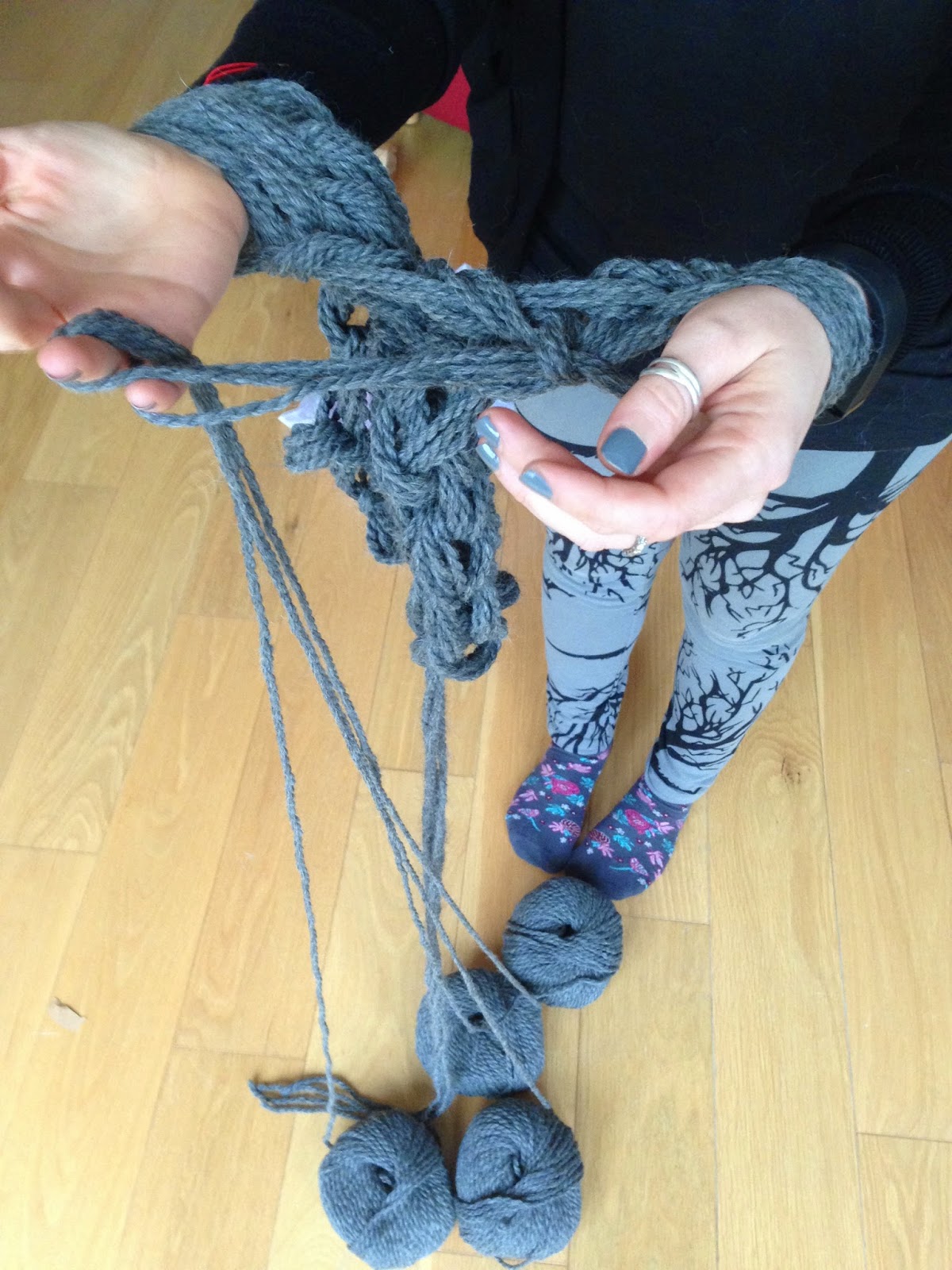Student life has many perks, although I never expected that as part of my course (which has nothing to do with craft or fashion), I would be doing some knitting. Yes, one lovely Thursday afternoon a few months ago, my coursework was to design and knit a mitten while watching Gilmore Girls. Bliss!
The mitten is part of a group project that involved exploring an aspect of science communication and philosophy. I won't bore you with the theory, but we decided to do something to highlight the important, and overlooked, role of objects in science. Somehow, this idea became http://labstory.co.uk/ , a 'scrolly'-style website where we pretend that the lab equipment do the experiments at night to correct the scientists' mistakes.
Where is the knitting, you ask, and what does it have to do with it? Well, the 'what does it have to do with it' took a while to figure out, but we knew we wanted to do some knitting. I also knew I wanted to do double-stitch to try it out and add it to my list of knitting skills, as I don't think intarsia and I will ever meet again (the sweetheart jumper is still in progress and is probably going to be frogged very soon as I doubt I'm going to pick it up 2 years later).
So this gave birth to the Lab Story mitten (apologies for the poor quality of the photos, I have no idea why they turned out so fuzzy...).
In case you didn't get it, that is a PCR tube, complete with googly eyes and a smile (maybe I should have called it PCR tube mitten?), and if you try really hard maybe even a little cap (the tube lid). What is very cool about it, however, is that the mitten has conductive thread to allow the wearer to use a touchscreen - no more taking your gloves off to use your phone! In a frenzy of excitement, I bought quite a lot of this thread, although my flat apparently ate the rest of it and it has now disappeared.
I have written a rough pattern for it, which is not really worthy of being published on Ravelry (I don't think it is original enough to warrant it), but if anyone is interested, here goes:
Yarn: Tiger Aran (very cheap, which was perfect for this project, but I would not recommend it)
Needles: Erm, I seem to have forgotten to make a note of that, but was prob 5mm. Oops!
Cast on 30 stitches, join in the round
1. Knit 18 rounds on 2x2 rib (knit 2, purl 2)
2. Knit 2, place marker, make 1, place marker, knit to end
3. Knit 2 rounds
4. Knit 2, slip marker, make 1, knit to next marker, make 1, slip marker, knit to end
Repeat steps 3 & 4 until there are 11 stitches between the markers
5. On the next round, knit 2, split 11 stitches onto waste yarn, join to continue knitting on the round
6. Knit until the tip of the little finger ( around 20 cm)
7. *Knit 4, Knit 2 together, repeat from * to end - 25 stitches
8. Knit to end
9. *Knit 3, Knit 2 together, repeat from * to end - 20 stitches
10. Knit to end
11. *Knit 2, Knit 2 together, repeat from * to end - 18 stitches
12. Knit to end
13. *Knit, Knit 2 together, repeat from * to end - 12 stitches
14. Knit 2 together to end - 6 stitches
15. Cut yarn, thread through remaining stitches to fasten
To make the thumb:
1. Pick up 11 stitches from scrap yarn, plus 2 additional ones, knit one row, joining in the round
2. Knit up to 4 cm
3. *Knit 2, Knit 2 together, repeat from * to last stitch, Knit 1
4. *Knit 1, Knit 2 together, repeat from * to last stitch, Knit 1
5. *Knit 2 together, repeat from * to last stitch, Knit 1
6. Cut yarn, thread through remaining stitches to fasten
The double-stitch was somewhat improvised, so I can't offer anything beyond more of a close-up of the tube. Its a fairly easy technique (as usual, I had to look at a bunch of youtube videos to get it), and once you get the hand of it it goes pretty fast. This will certainly be my technique of choice when it comes to adding patterns!







